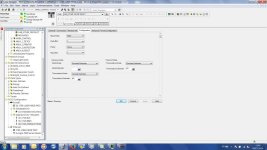Hey Guys,
Thanks in advance for any help.
We are converting our Compactlogix L32E application into the 1769-L18ER-B1BB.
One major hurdle left is writing information to a receipt printer. In the L32E I simply used some AWT commands and staged them appropriately.
I see now that the AWT is not supported by the L18 and I will need to program to suit. I had no idea that it was going to be this big of a pain.
Right now looks like I need RSNetworx to configure the module and some code within the PLC for actual writing. Is there a simple way to trigger/send information to the Local.X:O.Data register and trigger a write?
Seems like the setup in the manual is geared towards Devicenet reads, which is not what I am trying here.
Any help would be appreciated.
Thanks in advance for any help.
We are converting our Compactlogix L32E application into the 1769-L18ER-B1BB.
One major hurdle left is writing information to a receipt printer. In the L32E I simply used some AWT commands and staged them appropriately.
I see now that the AWT is not supported by the L18 and I will need to program to suit. I had no idea that it was going to be this big of a pain.
Right now looks like I need RSNetworx to configure the module and some code within the PLC for actual writing. Is there a simple way to trigger/send information to the Local.X:O.Data register and trigger a write?
Seems like the setup in the manual is geared towards Devicenet reads, which is not what I am trying here.
Any help would be appreciated.






